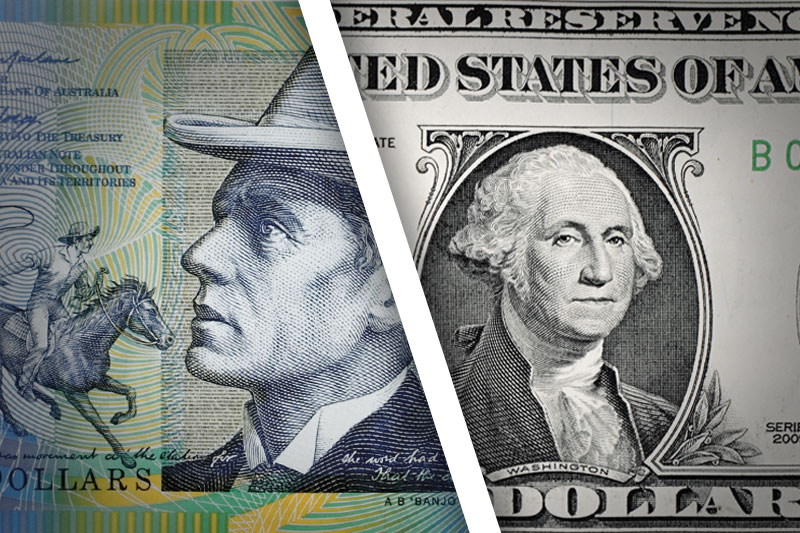Investing.com - The Australian dollar traded higher against its U.S. rival during Tuesday’s Asian, but the Aussie is still laboring below parity against the greenback after earlier flirting with 11-month lows against the U.S. currency.
In Asian trading Tuesday, AUD/USD rose 0.28% to 0.9981. The pair was likely to find support at 0.9922, the low of June 14, 2012 and resistance at 1.0093, Friday's high.
The U.S. dollar traded lower against nearly all of its major rivals during Tuesday’s Asian session, indicating that traders are booking some profits in the suddenly resurgent reserve currency despite some decent economic data.
In U.S. economic news, U.S retail sales rose 0.1% in April following a decline in March. The increase was helped by 1% rise in auto sales. Excluding auto sales, U.S. retail sales fell 0.1% in April. That data was published by the U.S. Commerce Department. The U.S. is the world’s largest economy and retail sales are believed to be a vital sign of consumer health.
Later Tuesday, Australian Treasurer Wayne Swan is set to deliver remarks about the country’s inability to return to a budget surplus. Swan has previously cited the strong Aussie as a reason for missing out on surplus expectations, but that excuse may be start to wear thin given the Aussie’s recent weakness.
Additionally, some analysts have said global central banks have started to temper their purchases of Australian dollars, a catalyst that previously bolstered the currency.
The Aussie’s strength against the greenback is not the only issue. Japan is Australia’s second-largest trading partner and the Aussie has jumped 26% against the yen since October. AUD/JPY is flat at 101.36 Tuesday.
Elsewhere, AUD/NZD fell 0.14% to 1.2048 after Statistics New Zealand said real retail sales there rose 0.5% in the first quarter compared with a fourth-quarter gain of 1.9%. Including price changes, New Zealand retail sales rose 0.7%, but economists expected an increase of 1.1%.
In Asian trading Tuesday, AUD/USD rose 0.28% to 0.9981. The pair was likely to find support at 0.9922, the low of June 14, 2012 and resistance at 1.0093, Friday's high.
The U.S. dollar traded lower against nearly all of its major rivals during Tuesday’s Asian session, indicating that traders are booking some profits in the suddenly resurgent reserve currency despite some decent economic data.
In U.S. economic news, U.S retail sales rose 0.1% in April following a decline in March. The increase was helped by 1% rise in auto sales. Excluding auto sales, U.S. retail sales fell 0.1% in April. That data was published by the U.S. Commerce Department. The U.S. is the world’s largest economy and retail sales are believed to be a vital sign of consumer health.
Later Tuesday, Australian Treasurer Wayne Swan is set to deliver remarks about the country’s inability to return to a budget surplus. Swan has previously cited the strong Aussie as a reason for missing out on surplus expectations, but that excuse may be start to wear thin given the Aussie’s recent weakness.
Additionally, some analysts have said global central banks have started to temper their purchases of Australian dollars, a catalyst that previously bolstered the currency.
The Aussie’s strength against the greenback is not the only issue. Japan is Australia’s second-largest trading partner and the Aussie has jumped 26% against the yen since October. AUD/JPY is flat at 101.36 Tuesday.
Elsewhere, AUD/NZD fell 0.14% to 1.2048 after Statistics New Zealand said real retail sales there rose 0.5% in the first quarter compared with a fourth-quarter gain of 1.9%. Including price changes, New Zealand retail sales rose 0.7%, but economists expected an increase of 1.1%.
